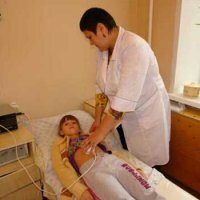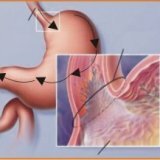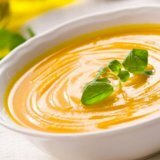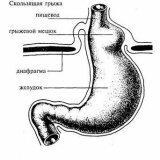Acute esophagitis in children

Etiology
Polyheological disease. It can be independent or accompany diseases of other organs and systems. The leading causes of acute oesophagitis are violations of the principles of nutrition and disease of the upper gastrointestinal tract - the stomach and duodenum;Eating too cold or hot food, which causes a sharp irritation of the mucosa with the subsequent development of inflammation;Chemical burns of the mucous membrane;Diseases of the oral cavity, stomach. Acute esophagitis can occur with some infectious diseases: scarlet fever, diphtheria, influenza, acute respiratory viral diseases. Such mechanical factors as foreign bodies of the esophagus, prolonged itubation, in which the very flexible wall of the esophagus is displaced and irritated, can also lead to inflammation of the mucosa of esophagoscopy - in some cases causes acute esophagitis. In recent years, the involvement of the esophagus in allergic reactions has become more frequent;Thus there are not only edema and hyperemia of the mucous membrane, but also its erosive damage.
Pathogenesis of
The development of acute esophagitis occurs as a result of direct exposure to the mucous membrane of the esophagus by thermal, chemical and mechanical factors or due to the spread to the wall of the esophagus of infection, most often from the oral cavity or upper respiratory tract. Infection can reach the esophagus wall and hematogenously from the focus, localized in other organs.
In general severe diseases, as a result of the reduction of general and tissue protection, local flora can be activated, leading to inflammation of the mucous membrane( uremia, sepsis, agranulocytosis, severe intoxication).
In some cases, the wall of the esophagus, in particular its mucous membrane, with a high degree of allergization of the child's body is a shock organ. And then the allergic lesion of the esophagus develops.
With the above lesions of the esophagus, the pathological process involves mainly the mucous membrane. The depth of lesion and prevalence are different - from superficial catarrhal to deep ulcerous-necrotic and from focal to widespread.
Clinic and Diagnosis
Clinical symptomatology is determined by the degree of mucosal involvement. Light catarrhal changes are not accompanied by severe symptoms, leak unnoticed. Only children of older age groups( schoolchildren) note unpleasant sensations behind the sternum during ingestion of food.
In more severe cases, there is a burning sensation behind the sternum along the esophagus, tingling, and sometimes sharp pain. Children of early age( preschoolers) can not differentiate their feelings. The appearance of pain after the first sips causes them to refuse food, to be capricious. In addition to pain, there are symptoms such as eructations, regurgitation, excessive salivation. Erosive-ulcerous changes in the mucous membrane lead to the appearance of an impurity of fresh blood in regurgitated or vomit masses.
Endoscopic examination reveals flushing and swelling of the mucous membrane. It looks dull, sometimes covered with mucus, here and there, hemorrhages - both small and spotted. Less common are the different sizes of erosion and ulcers. In the acute period of the disease, endoscopic examination should not be carried out because of the danger of additional trauma to the mucosa. Endoscopy is indicated in the period of stagnation of clinical symptoms.
For all the objectivity of X-ray contrast study of the esophagus in the case of acute esophagitis in children, this method is not sufficiently informative. There are: an unclear picture of the folds of the mucosa of the esophagus, the presence of signs of impaired motor function: hypotension or areas of spasm. In some cases, the deposition of barium gruel allows identifying areas of the erosive-ulcerative process.
The course of acute esophagitis largely depends on the etiologic factor. Thus, acute catarrhal esophagitis subsides a few days after the end of the cause that caused it. If the disease is long, severe, then the course of it is prolonged, acquires a recurrent nature. The most severe esophagitis occurs with uremic syndrome in the background of purulent-septic diseases, when areas of mucosal necrosis occur with the formation of deep ulcers. After such ulcerative necrotic esophagitis, cicatricial narrowing of the esophagus appears.
Treatment
Treatment, as with most somatic diseases, should be comprehensive, taking into account the causes that caused esophagitis, the nature of changes in the mucous membrane, as well as the individual characteristics of the child's body.
First of all, it is necessary to prescribe and conduct an acute, sparing diet, which excludes the consumption of food that irritates the mucous membrane of the esophagus. Food should be chemically, physically and mechanically sparing. These requirements are met by diet number 1 according to Pevzner. With severe damage to the mucous membrane and severe pain in the first days of the disease, it is advisable to carry out parenteral nutrition or the introduction of nutrients through the rectum. As the general condition of the patient improves and the intensity of symptoms decreases, warm milk, cream, gray eggs( or boiled soft boiled), liquid milk porridges, broths, mashed vegetable soups, cream soups, fruit jelly are prescribed.
A strict gentle diet is combined with the use of astringent and anti-inflammatory agents of plant origin, bismuth salts and silver. Their astringent effect is due to the ability to cause the precipitation of mucus proteins or wound exudates( in the case of a jazo-erosive process) with the formation of dense albumin. The resulting film protects the sensitive nerve endings of deeper tissues from irritation. Knitting solutions are used for 10-15 ml several times a day. The following solutions are most often used: 0.5% tannin solution, 2% collargol solution, 0.06% silver nitrate solution, althea root infusion 5.0: 200.0 together with the dissolved in it sub-nitrate of vikalin, vicair, A combination of bismuth with antiseptic and astringent preparations of plant origin. Children are prescribed ½-1 vocalin tablet, diluted in a small amount( 30-50 ml) of water. Drink this solution is recommended slowly, in small sips.
Before meals, especially when pain is expressed, it is advisable to give the patient a small amount of 0.5% solution of novocaine( 2-3 tablespoons) or powdered anesthesin( up to 0.5 g), or any mucus mixture.
To ensure a longer contact with the mucosa of the esophagus, astringent and topical anesthetics should be taken in the prone position.
Stimulation of the inflammatory process and rapid epithelization of erosions and ulcers of the esophagus mucosa is promoted by rosehip oil, sea buckthorn, as well as sunflower and corn oil. Take them 10-15 ml 3-4 times a day after meals. To stimulate the epithelization of erosive ulcerous surfaces of the mucosa and regeneration of deeper tissues of the esophageal mucosa, methyluracil or trichopolum is used, which facilitates the synthesis of nucleic acids in tissues. Methyluracil is prescribed in a dose of 0.1-0.5 g 3-4 times a day, depending on the age, trichopolum - 0.25-0.5 g( daily dose).
Prognosis and complications
As a rule, the prognosis is favorable, except for cases of severe ulcerative necrotic esophagitis, which can be complicated by esophageal perforation, bleeding, ie, conditions threatening the life of the patient. After perforation, mediastinitis develops. Ulcers of the esophagus determine the development of cicatricial stenosis. Most complications require surgical treatment.
Grow up healthy!



